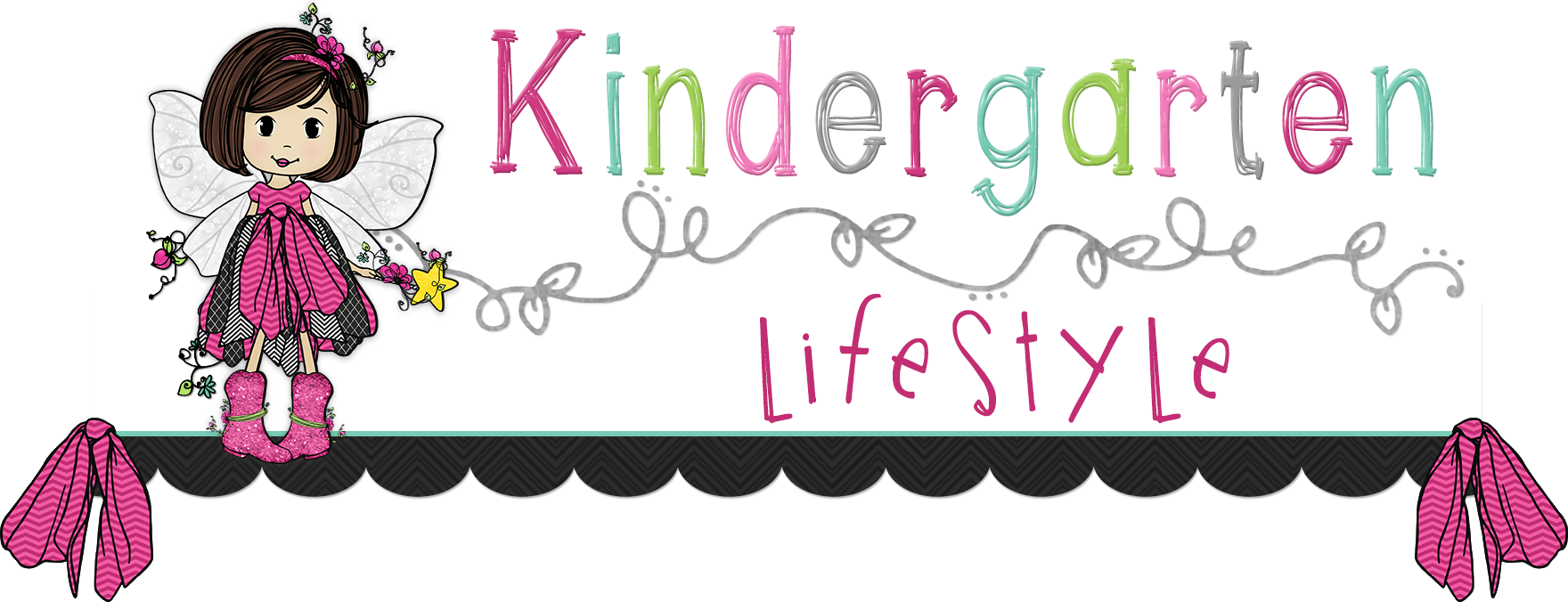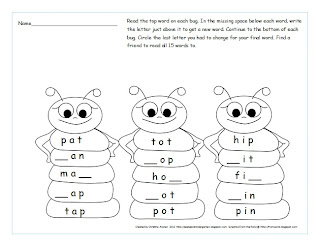Hello! My name is Christina from Sea Bear's Kindergarten. I have been teaching kindergarten for 8 years. Previous to that, I homeschooled my children for 4 years. I am a certified Orton-Gillingham tutor and I am also trained in the Slingerland Method of reading and spelling. I have been contracting myself to schools for the last 11 years. I LOVE helping students that struggle with the reading process realize that though they learn differently, they can do it! I am so excited that Jeannie has graciously allowed me to guest blog to share some of the things I do with the students I work with.
People read words two different ways. Some learn to read by simply memorizing words. Those who are terrific readers and spellers will tell you that they learned how to sound words out and can decode sounds and letters until they form words. So how do you teach someone who struggles to understand sounds to learn how to read or spell?
One of the best ways to teach someone how to read is to teach them how to listen to sounds instead of initially focusing on letters. They can learn to listen to a word and break it into individual sounds.
In this picture, the student is verbally given a two-letter word such as "ot". The student is to repeat the word back to you. Then show them how to say the word slowly like a turtle, "o....t". You then ask them to tell you how many sounds they heard in the word. (Hopefully, they will tell you 2...if not, do it again.) Then, using colored items such as the tiles in this picture, show them how to pull toward them 2 different colored tiles to represent the two different sounds they heard. They are to then touch each tile (starting left to right like you read) and make the individual sounds...."o....t". They say /o/ and touch the red tile and say /t/ and touch the blue tile.
This can be done over and over until the student gets the idea that each sound is a separate sound. "Fake" words are used to take the pressure off of a student "knowing" words and trying to work with what they know about known words. Doing this activity with "fake" words will truly show you if the student is growing in this concept.
 This activity can be done with three letter words such as "spo" as well. You have to be sure that the child picks a different colored tile for each different sound. You can use tiles or legos or teddy bear counters...anything that is the same size, but different colors. I like to use these plastic tiles because they lay flat and are easy to work with.
This activity can be done with three letter words such as "spo" as well. You have to be sure that the child picks a different colored tile for each different sound. You can use tiles or legos or teddy bear counters...anything that is the same size, but different colors. I like to use these plastic tiles because they lay flat and are easy to work with.
If you use words that have two similar letters such as "nin", make sure that the colored tiles match for the letters that match as in this picture.
This activity is always very rewarding. The kinesthetic movement gives them a way to "hold on to" the sounds they are hearing. Eventually, they can be shown how to not only break the sounds apart in the word, but they can also be shown how to move these pieces together and slowly blend them into a readable word. Down the road, the colored tiles can be changed out for ones that have individual letters on them. The lettered tiles can be used the same way the non-lettered tiles are and eventually, the struggling reader looks up into your eyes with the realization that he or she CAN DO IT!
I have to say that working with struggling readers has been one of my greatest rewards as a teacher. I love showing students that learning can be fun!
I love to make up fun reading activities for my students. I have created a Kindergarten Lifestyle EXCLUSIVE for you! Click HERE to receive your FREE 2 page reading/writing/spelling activity!
Teaching the struggling reader how to read involves many more steps than the one I shared above. If you like what you saw and want to learn more, please visit my site for more ideas. I would LOVE to hear your feedback on this activity.
Enjoy!












This is very similar to the Literacy First program that my school uses! We have certain phonological awareness skills that we test for, and segmenting sounds is one of them. Actually, the first skill we test is whether a child can differentiate a word - so we say a phrase or sentence "Tom likes cake" and have the child use manipulatives to indicate how many words. A LOT of our very young kinders and ESL kiddos cannot do this. Thanks for the freebies, they look fun!
ReplyDeleteJennifer @ Herding Kats In Kindergarten
Thanks for sharing.
ReplyDeleteHeather
Mrs. Shelton's Kindergarten
Interesting! I am going to have to try this next year!
ReplyDeleteJennifer
First Grade Blue SKies
Great post Christina! I especially love the cute printables - I like how to kids have to pay attention to which sound/letter is missing!!
ReplyDeleteThank you so much!
Thanks everyone!
ReplyDeletethank you Christina! I use the same concept with my Pre-K kiddos with the FAST Literacy Curriculum and it truly builds decoding skills and helps to discourage the memorization of text. Have you ever had issues with parents using this method? I have has several over the years that just don't understand why we would not be showing the letter. Do you have any ideas on how to address these concerns?
ReplyDeleteThanks,
Christine
www.thecrazypre-kclassroom.blogspot.com
Christine - I always explain to my parents that this is apart of phonemic awareness which is a prerequisite skill to reading with letters. If children can't hear the sounds in words they won't be good at decoding......
ReplyDeleteYes, I do the same. When I simply explain that it is a pre-reading activity and that there are so many ways to make this more fun and interactive for the child (using playdoh or even legos to do this), the parent usually buys into it as well. Once, after a discussion like this, a parent suggested she would try it with mini m&m's and let the child eat them if they got it correct. Both the parent and the child were excited about trying that one!
ReplyDelete